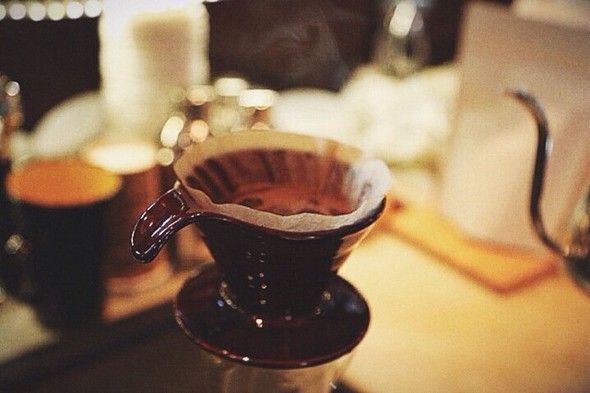Introduction to the varieties of boutique coffee beans what are the ancient native species?

In plant taxonomy, coffee belongs to the genus genus Coffea of the Rubiaceae family.
There are at least 100 varieties of coffee.
The following has been mentioned in the "Healthy Life" post "Love Boutique Coffee": The more common coffee has Arabica (Arabica, elegant flavor, is the main force of boutique coffee) and Robusta (Robusta, or thick beans, coarse flavor, high caffeine content, not boutique coffee) two major types.
In addition to these two species, there are two small species, Liberica(tall tree, mainly grown in Malaysia and West Africa) and Excelsa; but these two small species are very rare in the market (even the official Chinese translation has not been found).
Arabica also has many subspecies, all derived from the earliest Ethiopian Typica and Yemeni bourbon transplanted into Central and South America or Asia; the variety is numerous and numerous. But fine coffee mainly refers to carefully cultivated high-altitude Arabica, and there are not many varieties. The broad categories are listed below.
Ancient Protospecies:
Typica: The oldest indigenous variety of Ethiopia, from which all Arabica is derived. Tiebika has bronze top leaves, oval or thin pointed bean body, elegant flavor, weak constitution, poor disease resistance and low fruit yield. Jamaica Blue Mountain, Sumatra Mantning, Hawaii Kona and other excellent estate beans belong to Tibika.
Bourbon: Early (coffee prehistoric) variant of tibeka transplanted to Yemen, bean-shaped from thin pointed to rounded. In 1715, France transplanted the round beans of Yemen mocha to Bourbon Island on the east coast of Africa (renamed Reunion after the French Revolution) before it was named Bourbon. Bourbon beans were introduced to Brazil and Central and South America in 1727, and Yemeni mocha was transplanted to St. Helena Island (where Napoleon was later imprisoned) in 1732. Bourbon is the winner of the American Fine Coffee Cup test.
One of the characteristics of Tibika is that the top leaves are bronze.
gene mutant
Pointy Bourbon
Pointu): Found in Bourbon Island in 1810, the bean body has changed from round to pointed, with only half the caffeine content; but the quantity is small and weak, and it is extremely precious (mostly cultivated in the laboratory).
Maragogype, or Elephant
Bean: The most famous variety of tibeka, first discovered in 1870 in the Maragogype bean-growing region of the northeastern Brazilian state of Bahia, is at least three times larger than the average Arabica, hence the name. The flavor of elephant bean is bad at low altitude, but it is better at high altitude, with mild sour taste and sweet fragrance.
Geisha: A derivative of the Tibika family, Geisha was exported from the Geisha Mountains in southern Ethiopia in 1931, and after many countries became unknown, it was transplanted to Panama in the 1960s, and it began to win frequently in cup competitions in 2005.
Kenya "SL28" and "SL34": French and British missionaries and researchers in the early twentieth century in Kenya screening, breeding out of Bourbon lineages, a century has been adapted to Kenya's high concentration of phosphoric acid soil, breeding Kenya's characteristics of sour spirit; top Kenyan coffee are from these two varieties, but transplanted elsewhere is tasteless.
Bourbon Amarello, or Yellow
Bourbon): A variety of bourbon endemic to the Brazilian state of Sao Paulo, whose coffee fruits do not turn red when ripe and are orange-yellow. Other local bourbon derivatives were later found to have yellowed skins.
Caturra: A single genetic variant of bourbon discovered in Brazil in the 1950s. Long energy and disease resistance are better than bourbon, and no shade trees are needed; flavor is equal to or slightly worse than bourbon.
Pacas: Bourbon variety found in El Salvador, 1935 El Salvador coffee farmers Pacas transplanted the name Bourbon, to 1956 found that the results are higher than other coffee trees of the same kind, please identify the genetic mutation after identification.
Villa
Sarchi: Bourbon variety first discovered in Costa Rica in the 1960s, often appearing in cup test excellence lists in recent years.
From left to right: Kenya Round Bean, Elephant Bean, Kenya AA
arabica intraspecific hybridization
Hybrid)
New World (Mundo)
Novo): Natural hybrid of Bourbon and Sumatra tibeka, first discovered in Brazil. High yield, disease and pest resistance, planted in Brazil in large quantities in the 1950s, known as the new hope of Brazil's coffee industry; but the trees are tall and difficult to harvest.
Catuai: A hybrid of New World and Kadura; short trees, wind-resistant, but with a more monotonous flavor.
Pacamara: A hybrid of Pacas and Maragogype, the bean is second only to the elephant bean. It is an excellent variety bred by El Salvador in the 1950s. In recent years, the cup test results are good.
Kent: A hybrid variety of iron pica discovered in India, with high yield and disease resistance, but without good cup test results.
Arabica-robust bean (Interspecific Hybrid)
Timor: Natural hybrid found in East Timor and having 44 chromosomes, closer to Arabica; but bland in flavor.
Catimor: In 1959, the Portugal interbred Brazilian cadura with timo to breed a disease-resistant catimo. However, the flavor is also poor, and it is an important variety of commercial beans at present.
Icatu: Brazilian multi-generation hybrid improved variety, has been in Brazil's "extraordinary cup" top ten.
Ruiru 11: A hybrid variety developed in Kenya in 1985 that emphasizes yield rather than quality.
Arabica and stout bean hybrids have so far failed to qualify as specialty coffee; so many specialty fresh roast coffee vendors, such as fresh, do not have them. However, many even imported specialty coffee suppliers, but some of the hybrid beans into the blend (Blend) to reduce costs.
In addition, from the above-mentioned gene mutations (whether natural or scientific research products), their flavors have a great relationship with specific geographical conditions. Even within the same country, coffee beans produced on different plantations can vary significantly. For example: Jamaica national treasure Wallenford Manor Blue Mountain, more than twice as expensive as Jamaica super high mountain Blue Mountain.
Important Notice :
前街咖啡 FrontStreet Coffee has moved to new addredd:
FrontStreet Coffee Address: 315,Donghua East Road,GuangZhou
Tel:020 38364473
- Prev

Basic information of coffee the small seed species of coffee encyclopedia is Coffea arabica
[scientific name] the small grain species is Coffea arabica L., the medium grain species is Coffea canephora, the large grain species is Coffea liberica, which is also called Arabian species, the medium seed species is also called Gaffra species, and the large grain species are also called Liberian species. There are two common species: Arabica and Robusta. Rubiaceae (Rubiaceae), coffee genus (Coffea) [domestic]
- Next

A list of famous coffee beans in the world (in both Chinese and English)
Brazil: Santos, Bahia Peruvian Coffee beans: Chanchmayo, Cuzco, Norte, Puno Chinese Coffee beans: Yunnan Coffee, Hainan Coffee Democratic Republic of the Congo: Kivu, Ituri Vietnamese Coffee beans: Weasel Coffee Coffee Rwanda: Kivu Kenya
Related
- Guji coffee producing area of Guji, Ethiopia: Humbela, Shakiso, Wulaga
- What is the most expensive variety of Qiloso in BOP multi-variety group?
- How to store the coffee beans bought home?
- Why are Yemeni coffee beans so rare now?
- Ethiopian Sidamo all Red Fruit Sun Sun Santa Vini Coffee beans
- SOE is mostly sour? What does it mean? Is it a single bean? what's the difference between it and Italian blending?
- Is Italian coffee beans suitable for making hand-brewed coffee?
- How to choose coffee beans when making cold coffee? What kind of coffee beans are suitable for making cold coffee?
- Just entered the pit to make coffee, what kind of coffee beans should be chosen?
- Can only Japan buy real Blue Mountain Coffee? What are authentic Jamaican Blue Mountain coffee beans?

